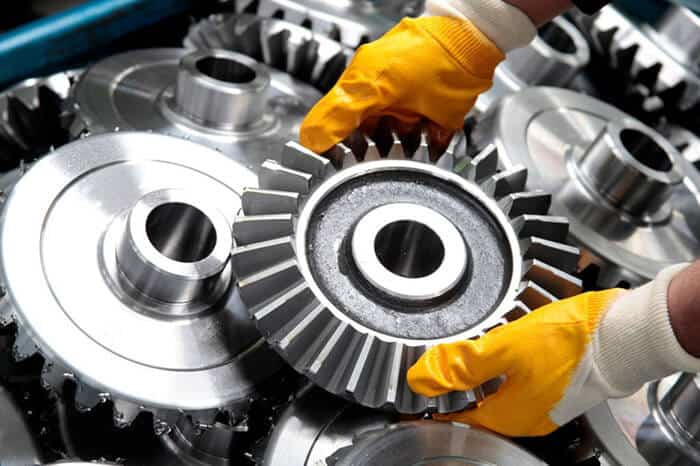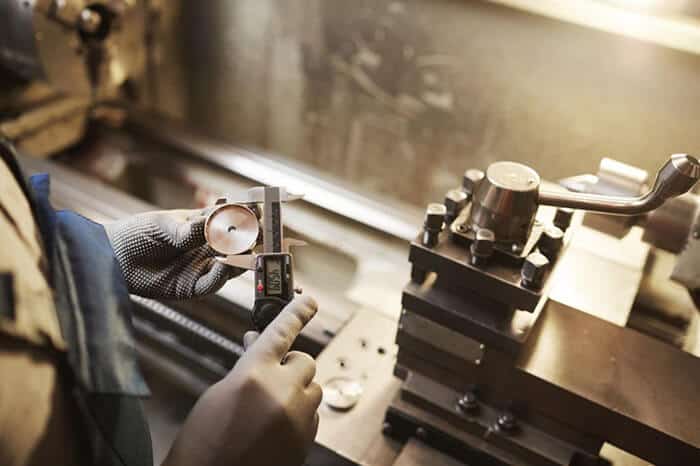In general, tool steel is called alloy and high alloy steel groups used for cutting, forging, bending hot and cold workpieces, as well as machining and machining and similar methods to bring the raw material in the form of products. So, what is the tool steel that most people are curious about the usage feature? The answer to the question should be explained in detail.
Tool steel should often be much harder and higher strength than the material it has processed. It should also resist abrasion according to the desired material. For all these reasons, the materials to be used for tool manufacturing should be of high hardness and strength at many levels in accordance with the conditions of the places of use, and nevertheless of sufficient ductility.
General Features of Tool Steel
Common properties of all tool steels used;
- Having a clean and homogeneous microstructure.
- Has a high degree of abrasion resistance.
- Having high tensile strength
- Having an adequate level of yield strength.
- Providing sufficient ductility.
- Providing high hardness.
- Providing high toughness.
- Having homogeneous hardness distribution after heat treatment
In general, tool steel is richer than the structures of other steel groups due to all its properties in terms of chemical compositions, the conditions of the application areas and the characteristics expected from them in terms of working conditions. When we look at the working conditions, the tool and mold steels working in mechanical, chemical, thermal and tribological loading environments should have hardness, wear resistance and toughness properties.
Usage Features of Tool Steel
In terms of usage characteristics, it emphasizes some features such as fatigue, diversity, creep resistance and oxidation and corrosion resistance. All the properties of tool steels; It is the ability to prevent the deterioration or breakage of tool molds and shapes under working conditions.
Tool steels are classified depending on the characteristics of their areas of use. All tool steels are produced with the help of ingot metallurgy and production has recently started with the powder metallurgical production method with increasing amounts. Similarly, in the steel alloying process, elements that have the ability to form carbides intensively due to the target are utilized.
With the use of carbide formers in very different amounts, the amount of carbon varies over a wide area.
In some steels, nickel and cobalt additions occur due to toughness and tempering continuity. The common aspects of all manufacturing steel products are that they show the feature of hardening with martensitic transformation. The differences between these steel groups come from the carbide type, amount and distribution formed by different amounts of alloying elements included in the structure to form the properties.

Functions of Tool Steels
Tool steels are generally produced in forms called prime steel or basic arc. For an extremely high quality production, clean scrap containing very small amounts of Cu, Cr and Ni should be used. Tool steels can be of good quality with the method called Emo, solidification is achieved in the crystallizer by providing cooling at low pressure levels and with the use of water, and it is also expressed as the reaction ability of the steel to drip thanks to the ESU method.
When we look at the structural properties of the steels, they are gapless, porous, and bubble-free. In addition, the tendency to precipitate in very small amounts provides better chemical homogeneity. Thanks to the very good core properties provided in this way, it benefits teams with large sizes.
It should be ensured that professionals who are experts in this field are assigned in processes that require clean and regular work. For this reason, a very rigorous personnel recruitment process should be carried out. Team steels, which are defined as Ua, are also steels with reduced gas amounts. The fact that the sulfur content is very low, which is revealed by the use of the EMO method, causes a decrease in non-metallic connections. In this way, very significant amounts of improvement are provided at the degrees called microscopic opacity.
In general, engineers work regularly to continuously increase all the desired features in tool steels. While doing these studies, they develop new and different methods. The people who will apply in this regard should follow the current developments with certainties.
Usage Areas of Tool Steels
It is used in forging processes of metal materials, casting processes, molds where processes such as injection and extrusion take place.
It is primarily used in the mold cores, cores or pushers of metal injection molds after aluminum.
It is also used in pressure casting molds and mold or pipe presses of light and heavy metals, as well as in inner intermediate sleeves and piercing punches and mandrels.
It is used in cutting or deburring tools with hot processes.
Use is provided in welded pipe productions and under-weld rollers.
It is used in plastic injection mold applications where high number of cycles, high surface quality and wear resistance are required.
Tool steel has a wide range of uses in various household appliances, construction industry, machinery manufacturing, automotive and sub-industry. The main criteria to be considered in the optimal selection of tool steels are the mold usage conditions, the geometry of the products to be produced, the section distributions depending on the part weights and, most importantly of all, the mold life depending on the number of parts to be produced.
The points to be considered in line with the processes to be applied in steel forging molds in tool steels are the correct steel choices and the availability of high quality steel alternatives related to them. Accordingly, there are other important issues that require attention in processes that increase mold lives and all efficiency. In this case, operations and controls are extremely important for mold efficiency and process costs in order to prevent the occurrence of maintenance, deterioration of surfaces and engravings or other damages that will occur during the process, especially in the mold. At some points, Esr quality hot work steels produce extremely successful results in the desired mold applications due to their homogeneous structures with all defects eliminated and highly purified impurity.

Pricing of Tool Steels
When we look at the general market, tool steel prices vary according to the types, sizes and weight of the desired material. Since these products are imported from abroad, the iron and steel sector, which is directly dependent on the exchange rate, has a very volatile price scale in this regard. For this reason, profit or loss rates are too variable for producers. Apart from these, the prices formed in the market vary a lot in this direction.
Due to the increase in the exchange rate and the weakening of the hand of the factories producing this production, crude steel production in iron and steel factories follows a decreasing graph. At this point, there are fluctuations in iron and steel prices. When we look at the current data, the current effects on the iron and steel sector in terms of pricing are extremely bad.
Due to the large decrease in steel exports in April 2020, production in many different factories has come to a halt. It is predicted that this contraction in steel exports will continue over time; in such cases, declining production may stop completely.

